The question of how to make a flower bed of perennials so that blooming all summer excites many flower lovers. They dream of making their garden a kind of oasis that attracts the attention of people around.
Content
We create a flower bed of perennial flowers
In creating flower beds, annual and perennial flowers are used. The first of them are planted and grown only one season. The second group includes perennial plants that grow and delight the eyes with flowering for several years.
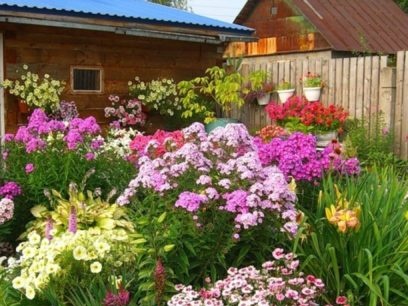
Perennials currently exist in large numbers. After flowering, only the top of the plant dies, and the root system lives for a long time.
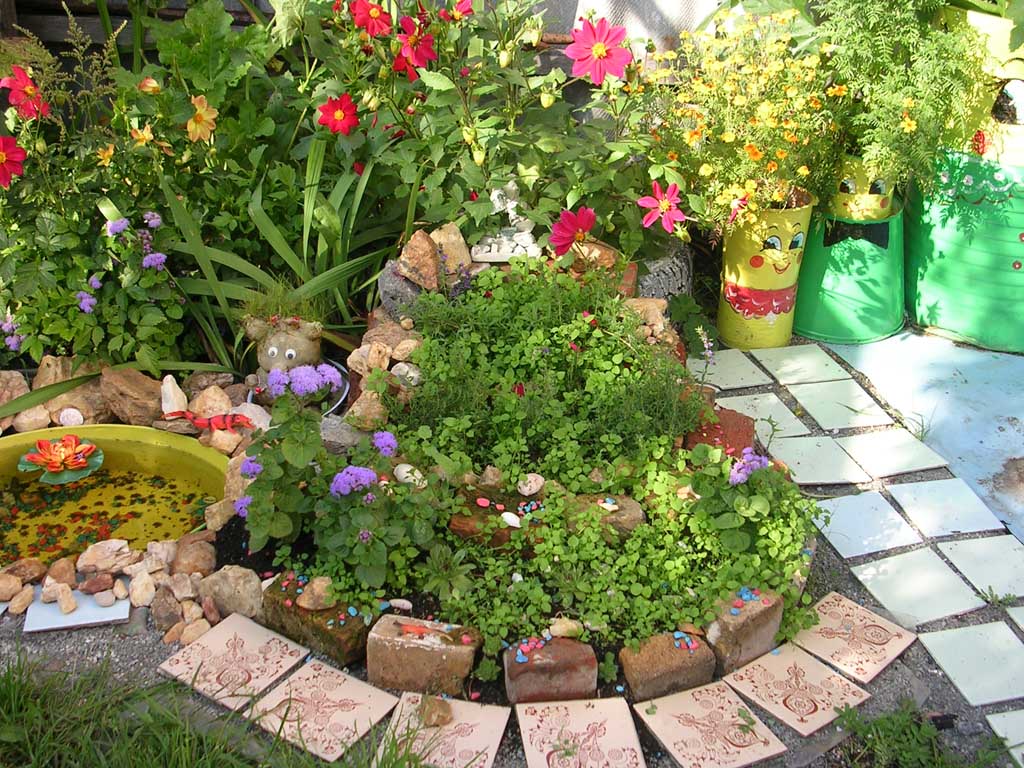 You may be interested in:
You may be interested in:Perennials multiply in different ways:
- by seeds;
- processes;
- divisions of the root system.
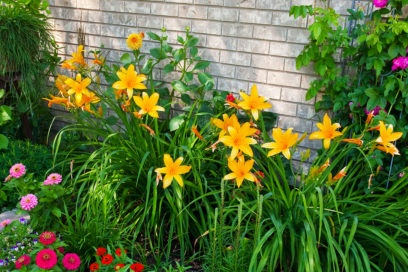
In the future, flowers are transplanted to other flower beds.
How to create a flowerbed
Creating a flower bed, the owner should pay attention to the following factors:
- Climatic conditions. For each climate, choose their own varieties of plants.
- The peculiarity of the location of the flowerbed. Depending on the relief features of the site, the owners competently use the free territory to create interesting options for the design of the site.
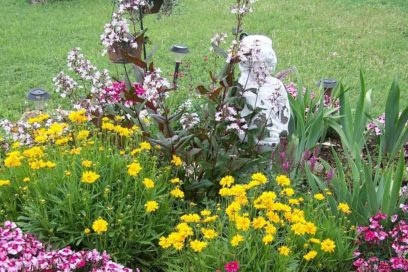
- Soil characteristic. Depending on the nature of the soil, various plants are chosen for planting on the flowerbed. In fertile areas, mallow, bell, lupine grows well. Flax, valerian, sage grows well on loamy, sandy or rocky lands. Astra, nyvyanik, yarrow develops well on marshy soils. Phlox, cosmea, cloves or gailardia can be cultivated in arid areas.
- The degree of illumination of the territory. Highly lit areas are suitable for growing peonies, poppies, aster, phlox. Lands with limited access to sunlight are suitable for the growth of astilbe, iris, primrose, aquilenia. On shaded flower beds, lilies of the valley, hosta, and fern grow well.
An important factor for creating a flower bed is the color combination.
A strong influence on a person, according to psychologists, has a color combination. This is what the florist draws attention to when creating a flower bed. With a competent color combination, the flowerbed will become aesthetically perfect.
When deciding how to make a flower bed of perennials so that it blooms all summer, you need to pay attention:
- The combination of light and shadow. Plants with smooth leaves reflect light. Frosted foliage cultures are characterized by light absorption. Florists recommend that the first group of plants be planted in the foreground. Matte leaves will be the final accent of flower beds of constant flowering.
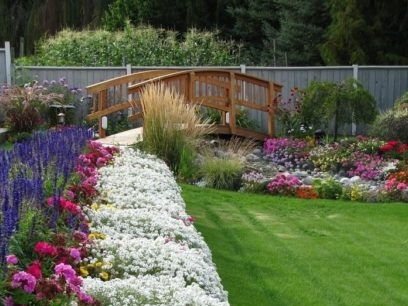
- The application of the unity of the color palette. In the flowerbed should grow crops of warm or cold tones. When mixing both types of tones, you may encounter an oversaturation of the color palette, which will become a repulsive moment.
- A visual increase in the size of the flowerbed of a small area. This can be done by reducing the number of plants on it and getting rid of an excessive amount of contrasting flowers.Florists recommend planting flowers 3-5 shades at the same time. With an increase in the number of colors above five, you get an excess of the palette, which will serve as a repulsive moment.
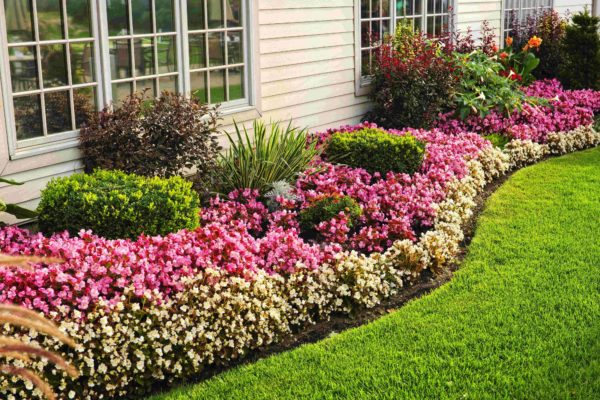
- A visual increase in the size of the flower garden is facilitated by the arrangement of bluish tones in the background, and yellowish-red in the front.
- If the flowerbed is saturated in the foreground, then it should be more calm in the background. They recommend planting no more than three crops in the foreground. If the number of plants is excessively increased, then reducing the flowers in the background will help to smooth the impression.
- Contrasting colors using white, pink or blue tones.
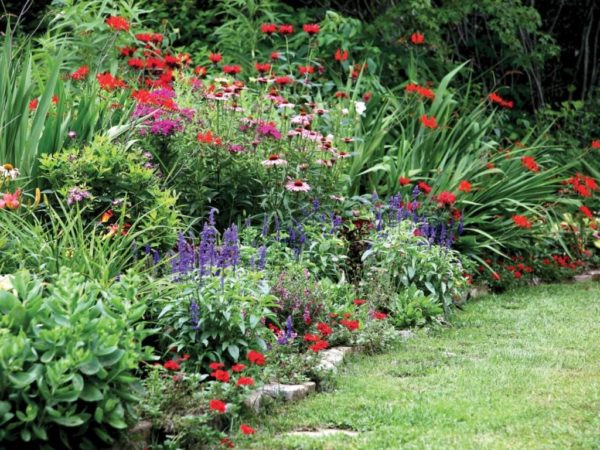
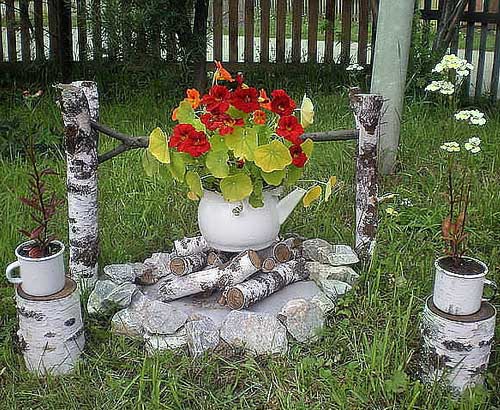 You may be interested in:
You may be interested in:- In one garden, florists recommend placing only one plot with plants of bright colors.
- It is impossible to issue a flower bed with the involvement of excessively contrasting plants.
- Saturated stained crops can be planted with plants in more neutral tones.
- The sizes of various plantings. It will be appropriate to place a small red spot in a large number of blue colors. If it is excessively increased in volume, then it will serve as an irritant.
- Selecting the primary color of the composition. Naturally, bright flowers look in the countryside, and in the city they will be a kind of irritant. Florists recommend planting neutral tones in urban flower beds.
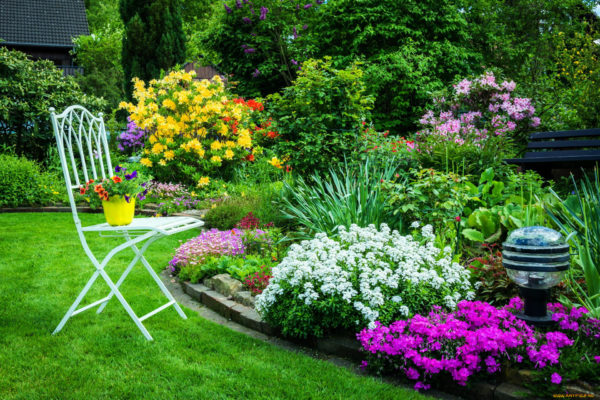
What flowers will delight depending on the season
In the spring, differently bulbous ones will look great. The flowerbed will be decorated with the planting of daffodils, crocuses, muscari, and Pushkin. In spring, the flowering period of anemones, Corydalis, daisies, pansies, viols. They are attractive because they begin to bloom early and are able to delight with beauty for a long time.
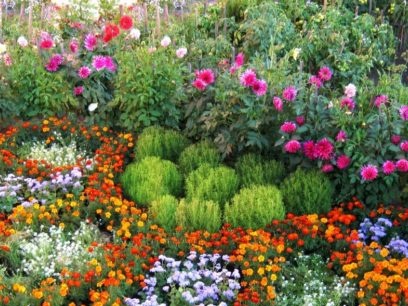
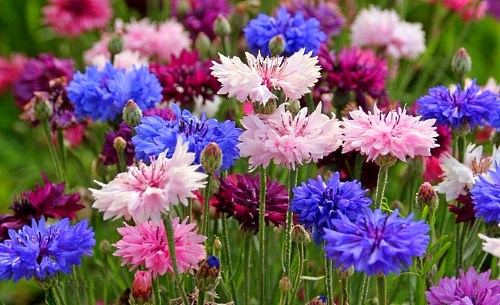 You may be interested in:
You may be interested in:In the summer, flowerbeds based on daylilies, peonies, carnations, bluebells and many other plants will delight the owners. Together with these perennials, zinnias, asters, nasturtiums, calendula, snapdragons, poppies, asters, petunias will look appropriate. Plants such as will effectively complement the composition:
- decorative corn;
- sunflower, amaranth.
From the end of summer and all autumn, the beauty of flower beds can give chrysanthemums and asters. You can take a place for landing stonecrop prominent, Gelenium, colchicum. In an original and effective way, the flowerbed can be decorated using such a natural border as decorative cabbage.
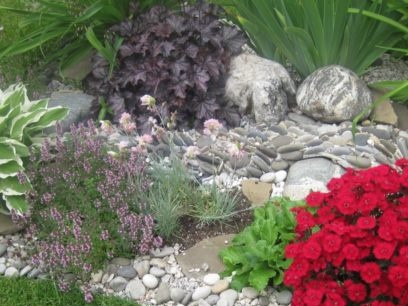
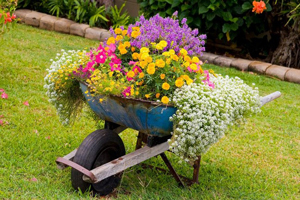 You may be interested in:
You may be interested in:When deciding how to make a flower bed of perennials so that it blooms all summer, you should not use plant varieties that should be dug up for the winter period. At this time, the roots of perennials can be damaged. Therefore, gladiolus, dahlia is not recommended to be planted on a flower bed with perennial crops.




 10 beautiful annuals that bloom all summer
10 beautiful annuals that bloom all summer Sow in the ground, without seedlings: 10 beautiful and unpretentious flowers
Sow in the ground, without seedlings: 10 beautiful and unpretentious flowers Platicodon planting and outdoor care
Platicodon planting and outdoor care Hosta - planting and care in the open ground in the Urals
Hosta - planting and care in the open ground in the Urals